


Discuss the structure of benzene with special reference to Kekule structure.
The molecular formula of benzene is C6H6 indicating a high degree of unsaturation. As a result, benzene is expected to be highly reactive compound like alkenes or alkynes. Therefore benzene should:
(i) decolourise aqueous potassium permanganate.
(ii) add water in the presence of acids.
(iii) decolourise bromine water.
But actually, benzene does not undergo such reactions. This implies that benzene is different from alkenes and alkynes. Moreover, being extraordinarily stable, it behaves more like alkanes than an alkene or alkynes. It prefers to undergo substitution reactions rather than addition.
Since benzene on catalytic hydrogenation forms cyclohexane (a ring compound), this suggests that the carbon skeleton of benzene should be a six-membered cyclic structure.
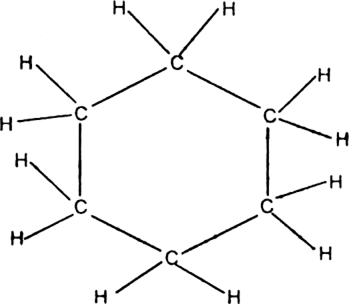
Kekule’s structure of benzene: Kekule proposed that benzene has a ring structure in which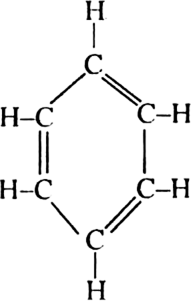
the six carbon atoms are arranged in the form of a regular hexagon and one hydrogen each is bonded to each carbon atom. Since carbon is tetravalent, he proposed that alternate single and double bonds are present between carbon atoms.
Objections to Kekule’s structure:
(i) Kekule’s structure allows the existence of two isomeric orthos-substituted dibromo benzene (I and NY).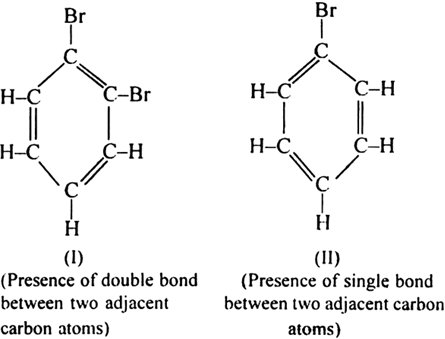
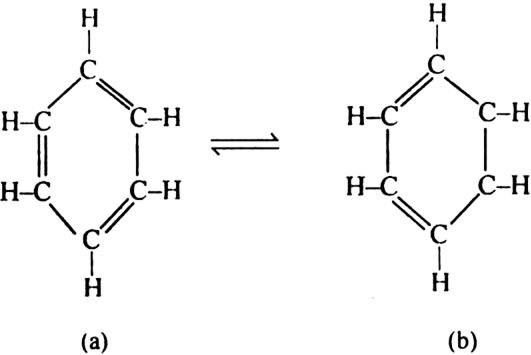
(ii) Kekule’s structure does not explain the extra ordinary stable nature of benzene molecule and its lack of reactivity towards addition reactions, resistance towards oxidation etc.
(iii) Equivalence of all the carbon-carbon bond lengths in benzene.
Alkynes are acidic in nature, whereas alkenes and alkanes are not. Explain.
The acidic character of alkynes can be explained by the concept of orbital electronegativity. The triple bonded carbon atoms of alkynes use two sp hybridised orbitals in the formation of σ bonds.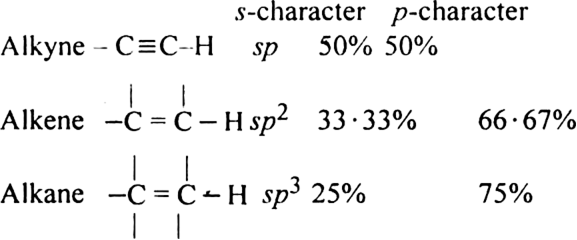
The carbon atoms of alkynes have greater s-character as compared to the double bonded carbon atoms of alkenes and singly bonded carbon atoms of an alkane. Now s-orbital penetrates more towards the nucleus, the electrons in it are more tightly held. The carbon atoms of the ( C ≡ C) triple bond become more electronegative than sp2 and sp3 hybridised carbon atom. The more electronegative carbon atom thus attracts the shared pair of electrons more strongly. As a result, a proton is easily knocked out from – C ≡ C – H as compared to ![]() and
and ![]() , hence acidic character. CH3 – C ≡ – CH3(But-2-yne) is not acidic because it does not contain any hydrogen attached to triple bonded carbon atom.
, hence acidic character. CH3 – C ≡ – CH3(But-2-yne) is not acidic because it does not contain any hydrogen attached to triple bonded carbon atom.
What are aromatic hydrocarbons or arenes?
Hydrocarbons and their alkyl, alkenyl and alkyl derivatives which contain one or more benzene ring either fused or isolated in their molecules are called aromatic hydrocarbons. They are also called arenes. Since such compounds resemble benzene in almost all of their properties, they are also called benzenoid compounds. A few members of the family are,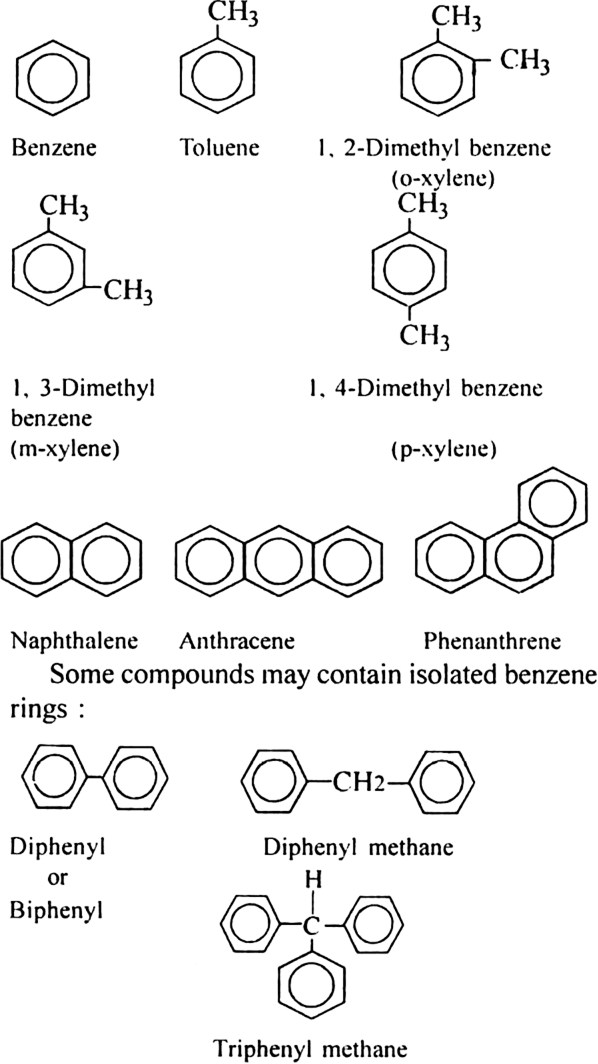
Explain isomerism in arenes.
Arenes show position isomerism in their molecules. The isomers differ with respect to the relative positions of the alkyl substituents. In disubstituted derivates (-CH3 group on the substituent), three isomers are possible.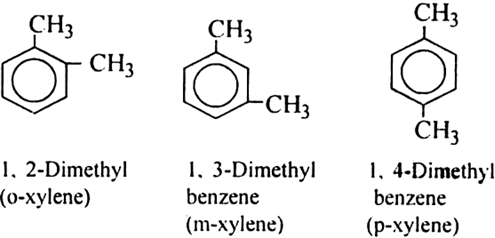
Similarly, three position isomers of trimethyl benzene are: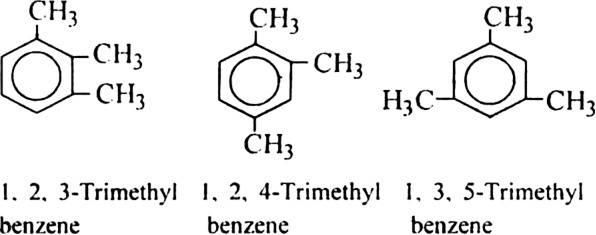
In the case of bicyclic arenes such as naphthalene, even monosubstituted compounds show position isomerism. For example. 
